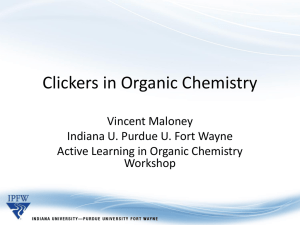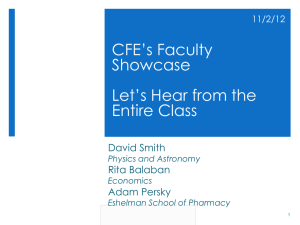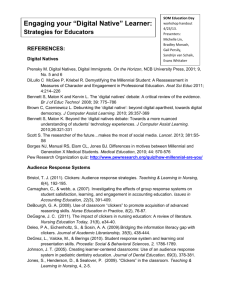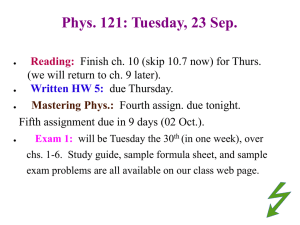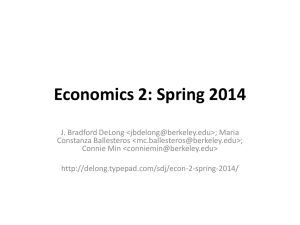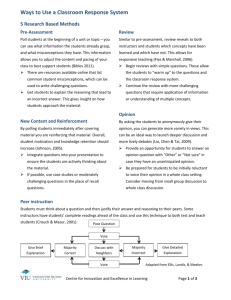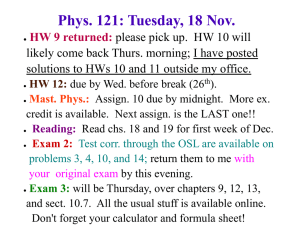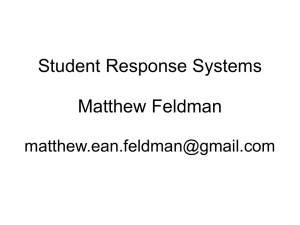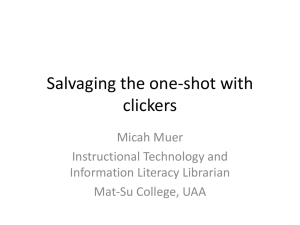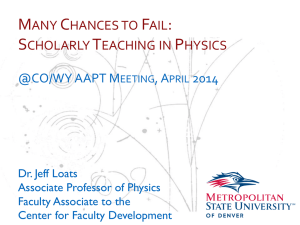Teaching and Clickers
advertisement
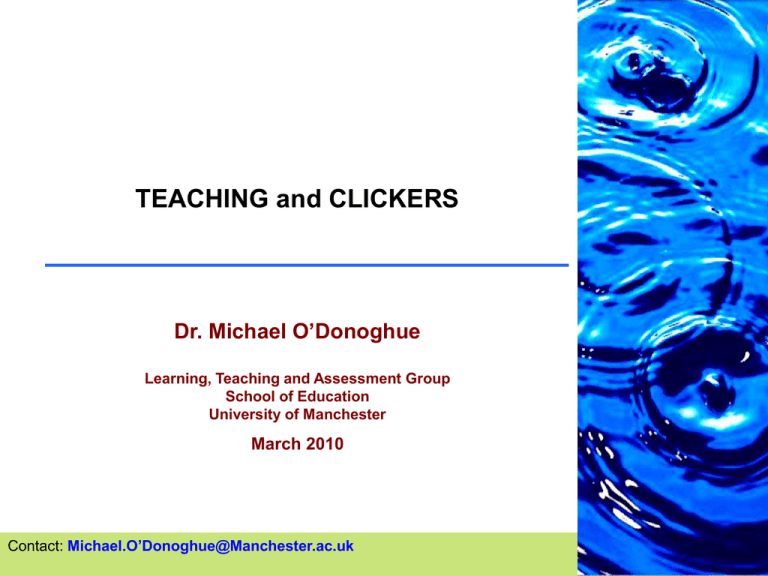
TEACHING and CLICKERS Dr. Michael O’Donoghue Learning, Teaching and Assessment Group School of Education University of Manchester March 2010 Contact: Michael.O’Donoghue@Manchester.ac.uk Previous research into practice Clicker use as car analogies In order to identify ‘good practice’ when using clickers with students we interviewed a number of staff members from across the University. Their experiences and uses of clickers varied considerably In order to communicate some of the ideas we came across a number of car and driving analogies will be used. Initial use and technical problems Almost all of the staff we spoke to about their use of clickers had experiences some form of technical problem. A number of colleagues asked for help when this occurred and have persevered with them in order to develop their own teaching style with them. #1 – Speed Bump analogy The clickers are used in the session to change the pace of delivery. The use of questions slows the pace of content transmission offering the possibility for students to think about what is being said and to respond to questions during the session. #2 – On ramp analogy Some topics, sessions or teaching styles may need a little something to allow the students to engage. This approach makes use of the clickers to add a little zest or interest to sessions – not necessarily to speed up the content transmission factor. #3 – Thelma & Louise analogy This is an all or nothing approach to clicker use in the classroom. Sessions planned this way rely on the clickers working to add a degree of interaction or assessment throughout sessions. This approach requires the design of specific material and may not be adaptable to other formats. #4 – Car park analogy This approach makes use of clickers in a range of ways and deviates from the standard question and answer format and goes where-ever the tutor decides. Probably requires a high degree of pedagogic knowledge, teaching experience, and knowledge of the students’ strengths and weaknesses. #5 – Long distance trucker Use of clickers over a longer term, perhaps throughout a semester. Use and questions are carefully planned by staff with experience in their use or who have read educational materials on their use and make use of the ideas and outcomes from this. #6 – Destination unknown This analogy is based on an inherent belief that the ‘clickers’ (technology) is taking the session somewhere and that learning is somehow taking place, but there’s a degree of uncertainty as to where that somewhere is and how learning is improved. #7 – Convoy analogy This involves a group of staff within the same department who come together to share practice and ideas in order to develop their use of clickers together, often with a range of inputs from their students. How do we come to know things? People tell us things We discuss things We think about things People tell us things “But then, if I am right, certain professors of education must be wrong when they say that they can put a knowledge into the soul which was not here before, like sight into blind eyes…Whereas, our argument shows that the power and capacity of learning exists in the soul already.” (Plato, The Republic, c.360 BC) “Plato argued for dialogue rather than instruction” (Bates, 1985: 17). Dialogue Through discussion we construct meaning “Plato argued for dialogue rather than instruction” (Bates, 1985: 17). Dialogue Through discussion we construct meaning Tutor Dialogue Few students Reflection Cognitive constructivism Help! Tutor Dialogue Large groups Clickers Eric Mazur Harvard Peer instruction: a User’s Guide 1997 Clicker - User polling device Clickers -1 Feedback Tutor Questions Processed and displayed Individual responses Clickers -2 Feedback Tutor Questions Processed and displayed Small group responses Clickers -3 Feedback Tutor Questions Processed and displayed Individual responses Individual feedback | asynchronous use In Summary Using the driver analogy, what kind of driver are you? Think about how you teach. Think about how clickers (or other technologies) might best meet your own teaching style There is no right or wrong way to use them, but there are different ways of using them. More than one way of introducing dialogue and activities to large groups using clickers Review your use – are the clickers enhancing your sessions or not?

